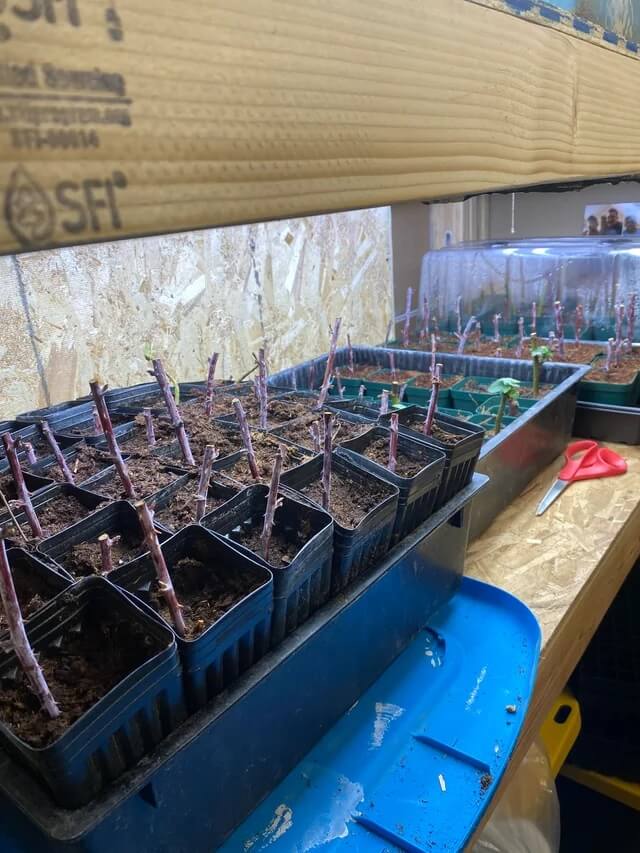A gardener shared photos of their indoor propagation station to explain their strategy for growing plants in the middle of winter.
The images were shared in the r/NativePlantGardening subreddit and show multiple shelves with individual pots of black raspberries and blackberry leaf-bud cuttings.
"This is where I'll be starting all my native flowers this year. Should hold 16 trays that are 10x20 once these berry bushes have rooted," the original poster wrote, along with the caption, "Started early this year."


Redditors were impressed by the setup and eager to learn more about the propagation station.
"I love growing things in the winter. It keeps me engaged and excited for spring," wrote another user. "I'm propagating a bunch of stuff that doesn't need stratification to get a head start in the spring. I'll also bring in anything I have outdoors that starts to germinate."
"At what temp and time of year is best to do this at?" commented one Redditor.
The gardener who shared the photos responded: "I'm in zone 6 in SE Nebraska. I have read and been told to take cuttings when the plants are dormant. I didn't time it well this year but from what I have read 8 weeks to get roots from cutting. Another 8 weeks to build root ball, another 4-8 weeks for them to harden off. These I plan to all pot up to 3 quart or gallon pots and plan in fall. Depends on how fast the roots grow."
Growing your own fruits and vegetables is a great way to save money on groceries and ensure your produce is organic while reducing your carbon footprint — every pound of food that needs to be transported creates 0.18 pounds of carbon dioxide. It's also a great way to incorporate native plants into your yard.
Native species not only attract vital pollinators, such as bees and butterflies, but they also help conserve water. Even partial lawn replacement with a few native plants growing in your yard can help reduce your water bill.
"Aww now I'm feeling inadequate for my one-shelf setup. Life goals!" commented one user.
"The lab," joked another Redditor.
Join our free newsletter for easy tips to save more, waste less, and help yourself while helping the planet.









